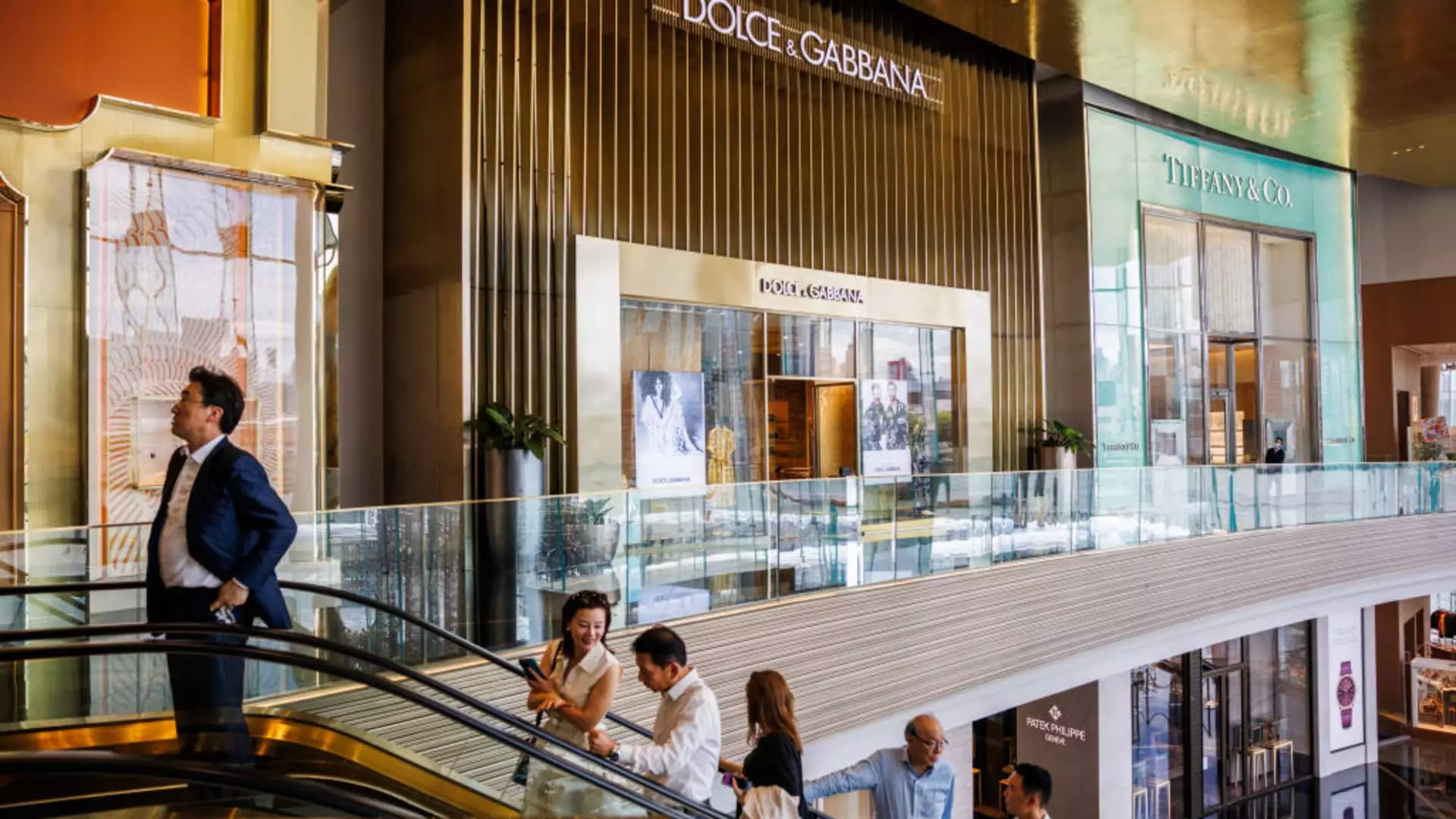In an era marked by economic uncertainty and shifting consumer preferences, the personal luxury goods market is experiencing a pivotal moment. According to Bain & Company’s annual luxury report, the sector is poised for its first downturn since the aftermath of the Global Financial Crisis, drawing attention to the evolving dynamics at play. This shift, which comes on the heels of nearly two decades of uninterrupted growth—excluding the pandemic-related disruptions—signals that the industry must adapt to a new reality where consumer behaviors are more volatile and influenced by various macroeconomic factors.
The report highlights an expected contraction of about 2% within the luxury sector for 2024, emphasizing the impact of rising costs and dwindling customer loyalty. Price-sensitive consumers are becoming increasingly cautious, leading to a decline in purchases of high-end goods ranging from fashion items and accessories to cosmetics. This is a critical juncture for luxury brands, many of which have long enjoyed a stable market characterized by a dedicated clientele.
Perhaps the most alarming aspect of the current luxury landscape is the significant downturn in demand from China, a key market that has traditionally driven growth. Despite its earlier recovery from the pandemic, China’s economy is grappling with sluggish spending, rendering it a troubling prospect for luxury brands that have heavily invested in capturing Chinese consumers. Notably, companies such as LVMH, Burberry, and Kering have reported disappointing revenue figures, a pattern that suggests vulnerability amid changing purchasing habits.
Richemont, the owner of Cartier, serves as a case study; the company recently disclosed a 1% decline in sales for the first half of its fiscal year largely attributed to reduced demand in China. These developments raise questions about the sustainability of luxury sales reliant on one geographical growth spurt and underline the need for brands to diversify their market strategies.
As luxury spending stagnates worldwide, the report does point out rays of hope. Regional markets like Europe and the U.S. are showing tentative signs of recovery as affluent consumers gradually return to shopping. The luxury sector notably found a new frontier in emerging trends pertaining to consumer spending; products like expensive automobiles, gourmet cuisine, and experiential travel are on the rise. This pivot towards experiences over material goods underscores a significant shift in consumer mindset—raising questions about the future relevance of traditional luxury goods.
With changing demographics, the industry’s focus is also shifting toward attracting the elusive Gen-Z consumers. This segment is characterized by an inclination toward ethical and experiential purchases, favoring brands that resonate with their values over those that solely emphasize status. Claudia D’Arpizio, a partner at Bain, underscores the imperative for luxury brands to re-evaluate their strategies: “To regain the trust and loyalty of consumers, particularly younger generations, brands must innovate and broaden their engagement strategies, balancing technology with personal touches.”
One of the most salient findings of the report is the growing preference for luxury experiences over physical goods. This transition may necessitate adjustments in how luxury firms define their product offerings. They must create and curate transformative experiences, especially in sectors like travel, wellness, and personalized services. Consumers are increasingly driven by the desire to forge connections and make memories rather than merely accumulating high-priced items.
Moreover, the report suggests that luxury brands need to engage deeply with their customers through tailored experiences and personalized offerings. Establishing meaningful relationships and fostering loyalty through genuine interactions is no longer just an option—it’s a necessity. In a space where competition is fierce, and customer expectations continually rise, the brands that will thrive are those that embrace innovation while nurturing the emotional intelligence required to connect authentically with their consumers.
As the luxury market prepares to navigate this downturn, it becomes evident that adaptation is critical. The challenges posed by economic constraints, changing consumer expectations, and market volatility call for strategic recalibrations. Brands must not only innovate in product offerings and marketing strategies but also commit to understanding the nuanced desires of a diverse consumer base. By recognizing that luxury can no longer be defined solely by opulence, companies can harness the opportunity to redefine their identities in a more sustainable and consumer-centric manner.

